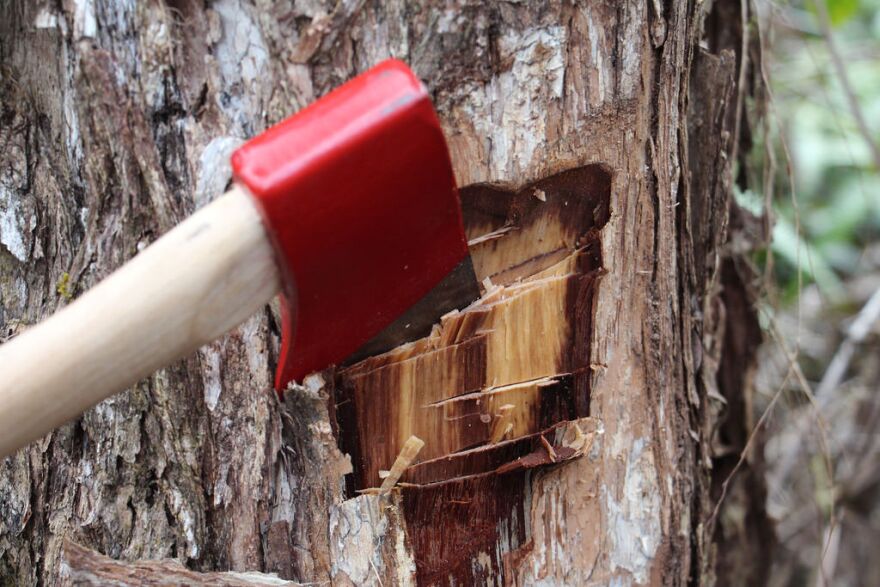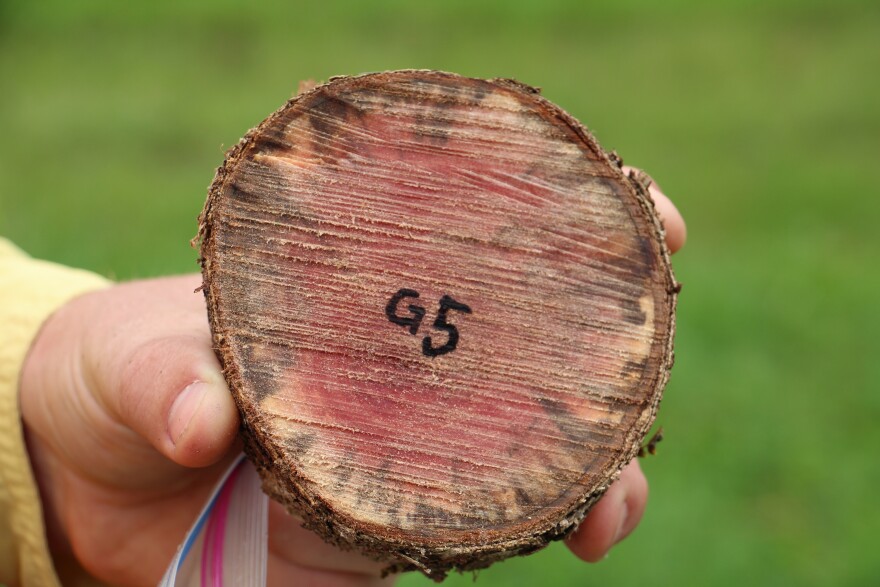One of Hawai‘i’s oldest and most culturally important native trees is under siege from a mysterious disease. So far more than 34,000 acres of ‘?hi‘a trees have died, and it's left scientists scrambling for a solution. HPR’s Molly Solomon visited the Big Island forest where it all began.

About 40 minutes south of Hilo, in the Leilani Estates subdivision in lower Puna, is what scientists are calling ground zero for Rapid ‘?hi‘a Death.
"So what you're seeing here is just the larger limbs left on the trees,” said J.B. Friday, an extension forester with the University of Hawai‘i. “I can see maybe two or three trees out of hundreds of trees that we're looking at, maybe two or three of the ‘?hi‘a trees still have leaves on them,” said Friday. “It's heartbreaking for people who knew what this forest was 10 years ago."
In 2010, he started getting phone calls from landowners in the area, reporting ‘?hi‘a trees dying on their property. "We took some samples and didn't get anything unusual. But by 2013 it became apparent that something was spreading rapidly,” said Friday. “This area, somewhere around here, is probably where it started."

"This forest was really a jewel of native diversity. It was perhaps the best example of a mature, ‘?hi‘a dominated forest,” said Flint Hughes, a research ecologist with the U.S. Department of Agriculture’s Forest Service. ‘?hi‘a is critical to Hawai‘i’s native ecosystem, especially the island’s water source. It also provides habitat for many endangered Hawaiian forest birds who feed from the bright red or yellow lehua blossoms. "This is our everything tree,” explained Hughes. “It's the most widespread, it's the foundational species for our forests. If we lose ‘?hi‘a, it will transform our forests."

Recent aerial surveys show the acreage of infected trees has more than doubled in the past two years. That’s according to data from Greg Asner, a Carnegie Institution for Science researcher and a professor at Stanford University. He flew a state-of-the-art plane earlier this year, mapping Hawai‘i Island forests to capture the extent of the disease. "We saw areas of utter devastation in terms of the fungus taking its course and killing thousands and thousands of ‘?hi‘a trees,” said Asner, who recently used similar technology to map drought impacts in California forests. “Lower Puna district is the epicenter, but it's certainly now all around the island."

Plant pathologist Lisa Keith first came across this ‘?hi‘a mystery in 2014. She got a phone call from a colleague with news of a fungus in the dying trees, likely a new strain of Ceratocystisfimbriata. "When i heard it, that same lightbulb went off,” said Keith. “Ceratocystis I remember from my studies causing a major problem."
Keith knew that fungus as a tree killer, similar to Dutch Elm Disease. She spent the next several months collecting samples and performing tree autopsies, looking for clues that would confirm her suspicions.

Back in her lab, she takes me to a chamber filled with ‘?hi‘a tree saplings that she’s infected with the disease. "This is what you end up dealing with," said Keith, showing me the areas on different branches where she inoculated them with the fungus. She said the saplings follow the same pattern they were seeing in the wild: browned leaves, dark markings in the bark, and eventually death in a matter of weeks. But the news isn’t all grim. Keith says even in the most devastated areas, some trees are surviving. "I think it's still hopeful that we will find ones that it's not an escapee. That it actually is natural resistance,” said Keith. “We can then bank seed or propagate and replant. That's some of the work for the future.”

For now basic questions still remain, like how did the fungus get here and what’s the plan to stop it. Answering those is critical since ‘?hi‘a makes up 80 percent of Hawai‘i’s native forests, with more than half growing on the Big Island.




